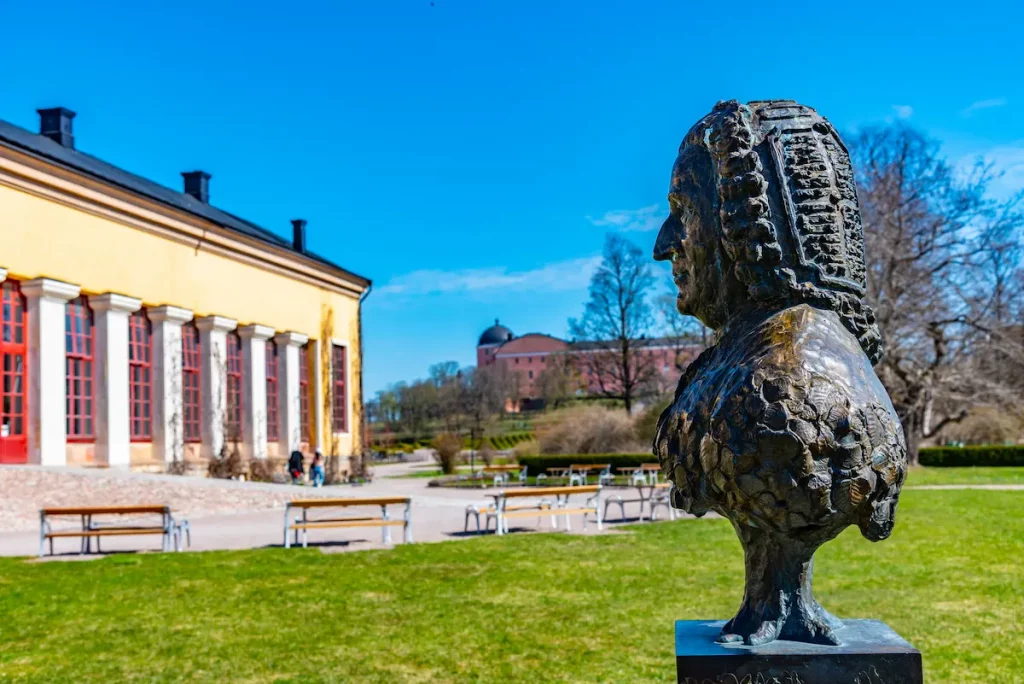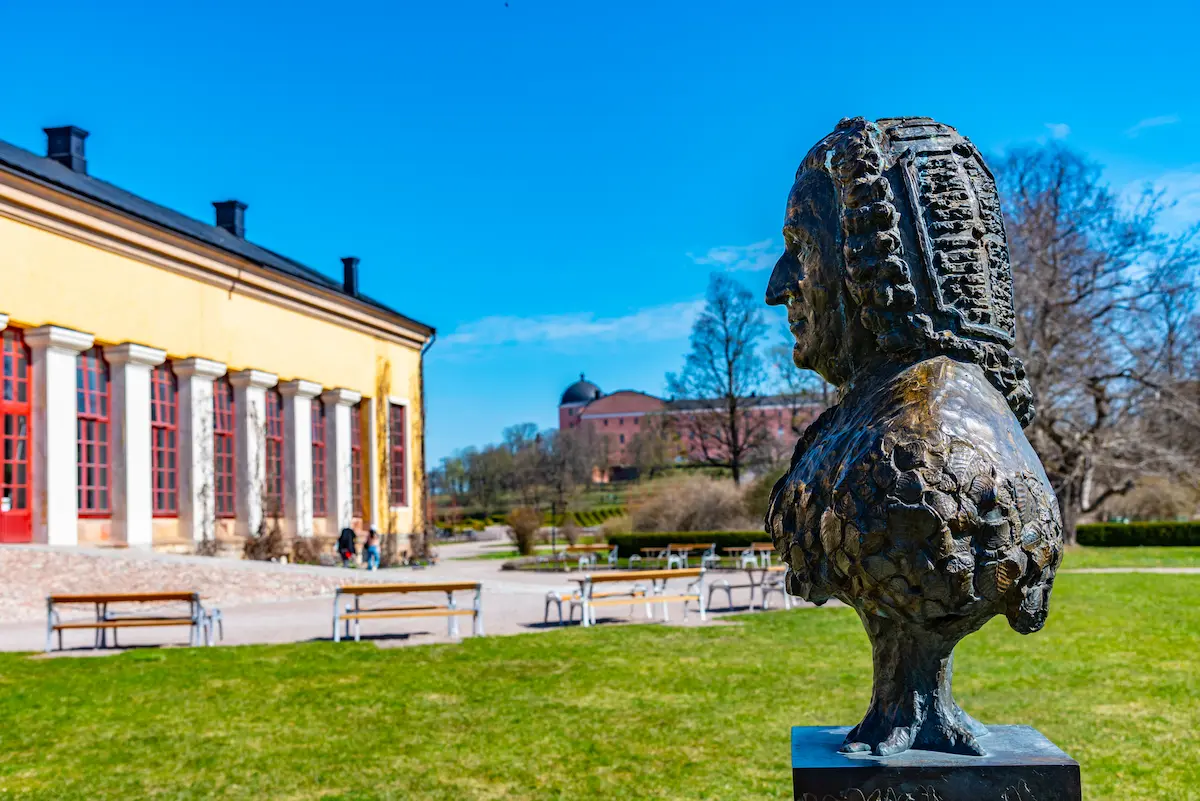Carolus (Carl) Linnaeus became the father of taxonomy due to his own father’s passion for botany, which he shared with Carl from an early age. By age five Carl had memorized the Latin names of many plants. He became a university lecturer at 23, which is when he began to develop a better system for naming plants.
It is said that no one has been a better botanist or zoologist, or written more books, more accurately, than Carolus (Carl) Linnaeus. These words were said by Linnaeus himself, talking about himself. Humility may not have been his strongest suit, still, Carolus Linnaeus was a remarkable man who forever changed the world of biology and botany and became the father of modern taxonomy.
Saying Carolus Linnaeus was a remarkable man is an understatement. His entire life was comprised of one significant accomplishment after another. He went from being a church minister’s son to one of the most respected names in biology and science, within the first 35 years of his life. Let’s look at this man’s achievements more closely so we can appreciate how much he changed the world.

Related Reading: Detailed Analysis of: “Forgive Me, Father, for I Have Sinned”
Carolus Linnaeus’ Early Years
Carl Linnaeus was born in 1707 in a small town called Stenbrohult, which is located in the southern province of Småland in Sweden. His father was a Lutheran church minister called Nils Ingemarsson Linnaeus, who also happened to be a passionate amateur botanist.
Much of Carl’s earliest days were spent with his father in their garden and the surrounding countryside, learning about the names and uses of plants. Equally passionate about education, Nils believed in teaching his son the Latin names of plants, which young Carl memorized religiously.
In today’s society, that kind of passion and knowledge would impress the educational institutions; back in the early 1700s, though, botany was considered a weak field of study and not worthy of being called a “science.” Carl’s teachers regarded his passion as a waste of time. All except one, who saw the potential that a passionate botanist could have in becoming a great physician.
The teacher tutored Carl and taught him many things about both botany and medicine, encouraging him to pursue further studies in these fields. During this time, Carl’s father and mother still hoped that he would show a passion for the priesthood and enrolled him in a cathedral school in 1724, where he studied Hebrew, Greek, theology, and mathematics.
However, his parents’ hopes were shattered when he chose to move to the house of a physician and his mentor, Johan Rothman, where he enrolled at Lund University at the age of 21 to study botany and physiology. Nils, not wanting to stand in his son’s way, despite his own wishes, agreed to this arrangement.
Carolus Linnaeus’ Early Studies
During his time at Lind University, Rothman taught Carl how to classify plants using Tournefort’s system and also showed him Sébastien Vaillant’s controversial works on the sexual reproduction of plants. This was seen as unholy in the eyes of many Christians since it stated that one plant could contain more than one reproductive organ, and some plants had the genitalia of both genders.
During this time, Carl Linnaeus registered at Lund as Carolus Linnaeus, preferring the Latin form of his name over that of the common tongue. Carolus learned much during his time at Lund, under the guidance of a professor who offered him lodging and free access to his library and lectures.
Linnaeus often spent his spare time looking for new plants in the surrounding countryside, frequently accompanied by fellow students who shared his passion and interests. A few professors at Lund were noticeable influences in Carolus’ life. Still, he soon heard that the botany faculty at Uppsala University was far superior and he later chose to move there for further studies.
As it turns out, unfortunately, the rumors about Uppsala’s botany faculty were severely exaggerated and Carolus found the teaching to be sub-standard. He quickly proved that he already knew more about botany than any of his professors or fellow students at Uppsala.
After only two years at Uppsala University, in May 1730, the head of the faculty saw a thesis that Linnaeus had written entitled “Praeludia Sponsaliorum Plantarum: on the reproductive process of plants. This impressed him so much that he selected Linnaeus to give lectures. This was remarkable since Linnaeus was a second-year student and only 23 years old at the time.
He often lectured in front of audiences of more than 300 people, and Olof Rudbeck, the head of the faculty, invited Carolus to move in with him and privately tutor his three youngest children. During this time, Linnaeus started developing his own system of classifying plants, writing several books about this superior method; based on each plant’s number of stamens and pistils.
Carolus Linnaeus’ Expedition To Lapland
During his time in Uppsala, Linnaeus got approval to lead an expedition to Lapland in search of new species of plants, animals, and valuable minerals. He was 25 at the time and returned after six months, having discovered and cataloged over 100 new plants. These were still named using Latin names since Linnaeus had yet to invent his binomial system.
However, during this time, the first thoughts of a better classification system for animals started developing in his mind, and many believe it was this expedition that marked the point where his true genius started to emerge. This expedition was also followed by some other similar journeys into different regions to discover new plants and animals.
Carolus Linnaeus In The Dutch Republic
In April 1735, Carolus went to the University of Harderwijk in the Dutch Republic. On his way there, Linnaeus famously made an enemy of the Mayor of Hamburg by identifying his prized taxidermied Hydra as a fake, made by monks to represent the beast mentioned in the book of Revelation. The mayor planned to sell the “hydra” for a considerable sum before Linnaeus made his findings public.
Upon arriving in Harderwijk, Linnaeus completed his doctoral degree within two weeks with a dissertation he had written earlier on the causes and treatment of malaria. Though he failed to identify the cause accurately, he was correct in predicting that a type of wormwood could be used to treat the disease.
Linnaeus remained in the Dutch Republic until 1738. During this time, he lectured and spent much time with botanists and physicians of note, expanding his knowledge and publishing books. He also traveled to Oxford and Paris and was offered an expedition to South Africa and South America, which he declined due to his aversion to the heat.
Notably, during his time in the Dutch Republic, Carolus Linnaeus managed to become the first person to grow bananas in Europe successfully. The cold climate had previously prevented banana trees from successfully flowering and producing the fruit. Still, Linnaeus found a way to simulate the tropical climate that the plants needed in order to flourish.
Carolus Linnaeus’ Return To Sweden
In June 1738, Carolus Linnaeus returned to Sweden. He moved to Stockholm and found work as a physician, after which he married Sara Elisabeth Moraea and fathered seven children. He was eventually appointed as the head Professor of Medicine at Uppsala University, where he also became a rector many years later.
Many expeditions later, Carolus Linnaeus published “Philosophia Botanica” in 1751. This book contained a complete explanation of his taxonomy system for plants, which he had been using during his earlier works. This same system is still used today, though it has been slightly updated and tweaked over the centuries.
“Species Plantarum” followed in 1753, which marked the starting point of Linnaeus’ system of botanical nomenclature, which is also still used today. This is the system that reduces the names of species to two words that can be either Latin or written in a Latin grammatical way.
Carolus Linnaeus’ Nobility and Later Life
Because of his accomplishments and worldwide recognition, King Adolf Frederick of Sweden granted Carolus Linnaeus royalty in 1757. After his ennoblement in 1761, he changed his name to Carl von Linnè, Latinized as Carolus a Linnè. He continued teaching and writing, and his fame spread worldwide; even Catherine II of Russia sent him seeds from her country to study.
His health started deteriorating in the late 1760s, and he finally retired from Uppsala University in December 1772. In 1773 he suffered a stroke that partially paralyzed him. This was followed by a second stroke in 1776, leaving him blind in his right eye and with severe memory loss. He could not even remember writing his books anymore, though he retained a great appreciation for the works.
Carolus Linnaeus had a third stroke in December 1777, which weakened him to the point where he passed away on 10 January 1778. He was buried in Uppsala Cathedral ten days later.
Conclusion
Carolus Linnaeus changed the world of science within his lifetime, but it went even further than that. Leaving all his works to his wife and children, they were eventually purchased by James Edward Smith, a 24-year-old medical student who founded the Linnean Society of London in 1788. Through this society, the name of Carolus Linnaeus lives on to this day, and his legacy will still be here for generations to come.

